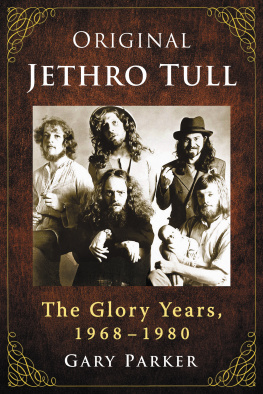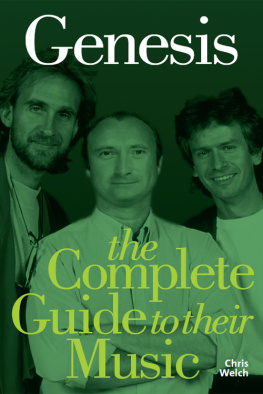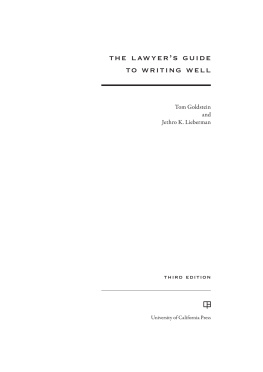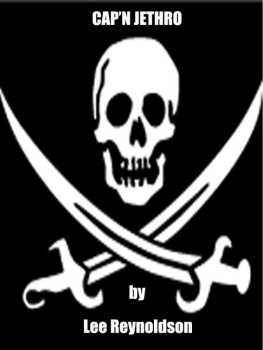Praise for the series:
Passionate, obsessive, and smartNylon
Religious tracts for the rocknroll faithfulBoldtype
Each volume has a distinct, almost militantly personal take on a beloved long-player the books that have resulted are like the albums themselvesfilled with moments of shimmering beauty, forgivable flaws, and stubborn eccentricityTracks Magazine
At their best, these books make rich, thought-provoking arguments for the song collections at handThe Philadelphia Inquirer
Praise for individual books in the series:
Dusty in Memphis
Warren Zanes is so in love with Dusty Springfields great 1969 adventure in tortured Dixie soul that hes willing to jump off the deep end in writing about itRolling Stone
A heartfelt dive into the world of 60s R&B dazzlingPop Culture Press
A long, scholarly, and convincing piece of nonfiction analyzing the myth of the American SouthNick Hornby, The Believer
Forever Changes
Hultkrans obsesses brilliantly on the rock legends seminal discVanity Fair
Exemplary a wonderful piece of writingPop Culture Press
Great the writing and approach matches the enduring complexity of its subjectJon Savage, Word
The Kinks Are The Village Green Preservation Society
This is the sort of focus that may make you want to buy a copy, or dig out your old oneThe Guardian
This detailed tome leads the reader through the often fraught construction of what is now regarded as Daviess masterpieceand, like the best books of its ilk, it makes the reader want to either reinvestigate the album or hear it for the first timeBlender Magazine
Fascinating and superbly researched a book that every Kinks fan will loveRecord Collector
Meat Is Murder
Full of mordant wit and real heartache. A dead-on depiction of what it feels like when pop music articulates your pain with an elegance you could never hope to muster. Meat is Murder does a brilliant job of capturing
how, in a world that doesnt care, listening to your favorite album can save your lifeThe Philadelphia Inquirer
Like his exquisite LPs, Pernices perceptive, poetic ear for unpicking the workings of troubled inner lives is exceptionalUncut
A slim, confessional novella equal to anything written by Nick HornbyBandoppler
One can accept, reluctantly, Pernices apparently inexhaustible ability to knock out brilliant three-minute pop songs. But now it turns out that he can write fiction too, and so envy and bitterness become unavoidableNick Hornby, The Believer
The Piper at the Gates of Dawn
John Cavanagh combines interviews with early associates of Pink Floyd and recording-studio nitty-gritty to vividly capture the first and last flush of Syd Barretts psychedelic genius on the Floyds 67 debutRolling Stone
Digs impressively deep a must-have for Syd-era Floyd fansRecord Collector
Harvest
Successfully sets the album both in its time and within the artists canonRecord Collector
Aqualung
Also available in this series
The Kinks Are The Village Green Preservation Society,
by Andy Miller
Dusty in Memphis, by Warren Zanes
Meat Is Murder, by Joe Pernice
Harvest, by Sam Inglis
Forever Changes, by Andrew Hultkrans
The Piper at the Gates of Dawn, by John Cavanagh
Sign O the Times, by Michaelangelo Matos
Unknown Pleasures, by Chris Ott
The Velvet Underground and Nico, by Joe Harvard
Abba Gold, by Elisabeth Vincentelli
Electric Ladyland, by John Perry
Let It Be, by Steve Matteo
OK Computer, by Dai Griffiths
Let It Be, by Colin Meloy
Live at the Apollo, by Douglas Wolk
Loveless, by Mike McGonigal
Grace, by Daphne Brooks
Born in the USA, by Geoff Himes
Led Zeppelin IV, by Erik Davis
In the Aeroplane over the Sea, by Kim Cooper
Kick out the Jams, by Don McLeese
Endtroducing , by Eliot Wilder
Pet Sounds, by Jim Fusilli
Low, by Hugo Wilcken
Armed Forces, by Franklin Bruno
Exile on Main Street, by Bill Janowitz
Introduction
This book is an essay in interpretation. The album Aqualung has fascinated me ever since my brother first bought it more than thirty years ago, and here I take the opportunity to explore its meanings. What I write will make most sense to you if you have the album handy, or if you are able to listen to it in conjunction with reading these notes. A couple of caveats are in order, though. It seems to me that the more unequivocal the meaning of a song, that the more understanding it entails disinterring its meaning correctly, the less interesting it is likely to be. Although journalistic writing may often proceed as if the meanings of songs were determinate, as if there were right and wrong ways to interpret (and how important it is to make the right interpretation, to be in the know), there is a strong body of opinion that acknowledges the flexibility with which listeners actually approach songs and attempt to discover meaning within them. Richard Middleton writes in terms of some music being under-coded, (and not only, I would add, the lyrics).
So, it might be as well for you to remember that I only offer one (or sometimes two) among a possible multitude of ways of making sense of this collection of expressive utterances, a sense that I believe depends both on the connotations of particular sounds and also the ways they are structured. And there is no reason why mine should be more plausible than anyone elses. What I have endeavoured to do, however, is always to observe that these are songs, that they are sung and accompanied by various instruments making various musical soundsthey do not consist of lyrics that are spoken. Therefore, how they are performed can be vital to what they might mean, to the meanings to be found in them. Two things to say here. Firstly, I shall have to refer to explicitly musical things: melodies, chords, rhythms and the order in which they occur, instruments, textures (how strands in the musical fabric combinewhether they are dense, lumpy, thin, sparse, homogeneous, differentiated), and the use of stereo space. Reference to these is unavoidable and frequently impedes communication because they seem to involve specialist language. Yet we can all sing melodieswe can notice when our voice is going up or down, whether it is leaping from note to note (moving by a fairly large distance) or moving by step (a little). We feel rhythms and usually have a concept, however imprecise, of a chord, or notes sounding together. I shall keep such language as simple as possible but, in order to explain the musical effects of the album, cannot avoid it. Secondly, I surely will go into too much detail for some readers, at some points, but then an unintended word can have life-long consequencescertain details of these songs may have been given little thought at the time of their writing or recording, but all these details can become part of listeners lives and identity. And Anderson himself is not discouraging about such an endeavour:






![Lambley - And the Band Begins to Play: [Part9 The Definitive Guide to the Beatles White Album]](/uploads/posts/book/213743/thumbs/lambley-and-the-band-begins-to-play-part9-the.jpg)



